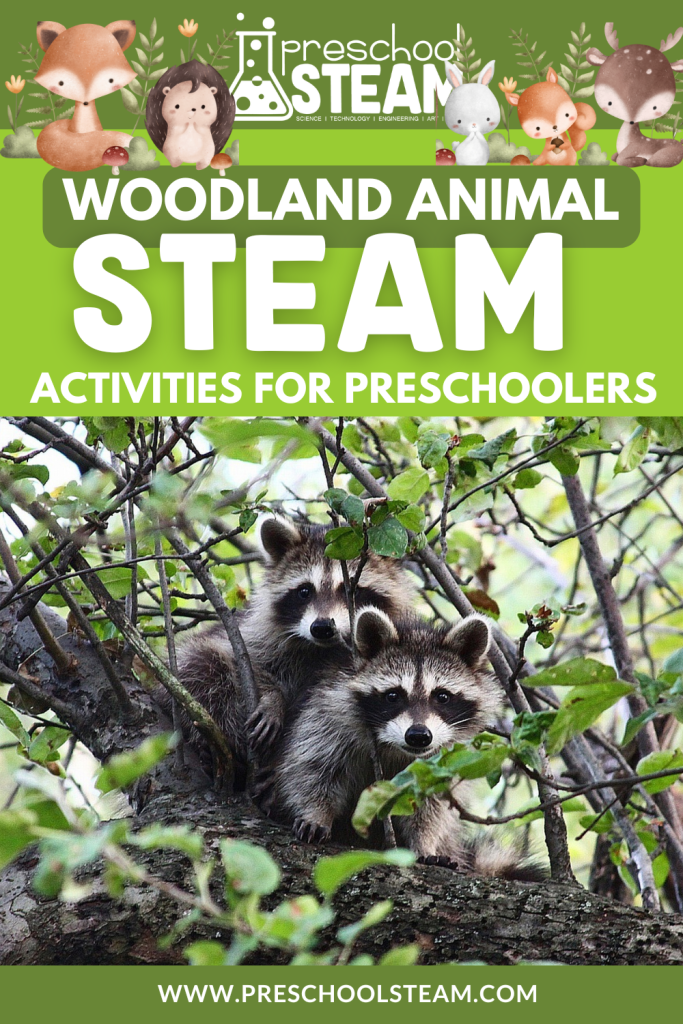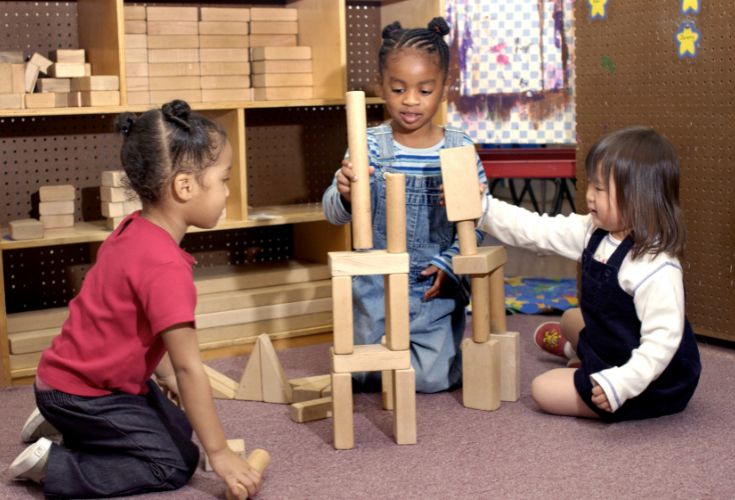The natural world is full of wonder, and woodland animals provide a perfect theme to spark curiosity and learning in young children. Through playful activities, preschoolers can explore the habitats, behaviors, and characteristics of woodland creatures while diving into key STEAM concepts.
Using our Play-Based STEAM System—Prep, Play, and Guide—you can create an immersive learning experience that encourages hands-on discovery and critical thinking.
In this post, we’ll guide you through a woodland animal-themed STEAM adventure that lets children learn through play, exploring science, engineering, and creativity while discovering the wonders of the forest.

Step 1: Play Prep – Set the Stage for Woodland Exploration
The first step in our system is to prep the environment. Create an inviting woodland setup where children can explore the world of animals through hands-on activities.
Woodland Animal Exploration Zones:
- Forest Habitat Building Station: Use natural materials like twigs, leaves, and rocks along with toy animals (foxes, owls, squirrels, etc.). Let the children create habitats for their animals, mimicking real forest environments.
- Animal Tracks Station: Provide toy animal figures and trays of sand or playdough so children can make tracks and explore how animals move and leave behind clues.
- Creative Woodland Art Table: Set up a space with leaves, pinecones, and other natural materials to create animal-themed collages or sculptures. Provide googly eyes, glue, and markers for added creativity.
Step 2: Play Magic with the Woodland World
Once the environment is set, let the children explore the materials freely. During this phase, your role is to observe their interactions and see what piques their curiosity.
Key Observations:
- Are they building elaborate homes for their animals? What materials are they choosing and why?
- How are they using the animal tracks station? Are they comparing different footprints or experimenting with how the tracks look when they move the toys in different ways?
- At the art table, are they focused on texture, color, or recreating animal shapes?
This observational phase is important because it shows you where their natural interests lie, which will guide the next step.
Step 3: 5-Star Guide – Dive Deeper Into STEAM Learning
After observing the children’s play, it’s time to guide them deeper into STEAM learning by introducing concepts and encouraging further exploration.
Forest Habitat Building Station: Engineering and Environmental Science
- Extend the Learning:
- Ask: “What kind of home does a fox need to stay safe in the forest? How can we build a den using these twigs and leaves?”
- Guide: Encourage the children to think about the structure and stability of the habitat. Challenge them to build a strong den that won’t collapse, introducing basic engineering concepts.
- Explore Science: “Why do squirrels need trees? What other animals live in the trees?” This is a great opportunity to talk about forest ecosystems and how animals rely on their environments.
Animal Tracks Station: Science and Math
- Extend the Learning:
- Ask: “Which animal tracks are the biggest? Which ones are the smallest?” Let them compare the size and shape of different tracks, introducing simple math concepts like measurement and comparison.
- Guide: Help them understand how scientists use tracks to learn about animal behavior. “What do the tracks tell us about where the animal was going? Can we follow them to find out where it lives?”
- Science Exploration: Explain how animals leave tracks in the mud or snow, and discuss how different animals have different footprints based on their size and how they move.
Creative Woodland Art Table: Art and Engineering
- Extend the Learning:
- Ask: “Can you use these leaves and pinecones to create your favorite woodland animal? What shapes and textures can you find in nature?”
- Guide: Encourage them to think about the engineering side of their creations. “How can we attach these materials to build a sturdy sculpture?”
- Explore Nature and Art: Talk about how nature inspires art, and ask them to think about the colors and textures they see in the forest.
Bringing It All Together: Woodland Animals and STEAM
By using the Play-Based STEAM System, you’ve created an immersive environment where preschoolers can explore woodland animals while developing critical thinking and problem-solving skills.
Here’s how it works:
- Play Prep: Set up an engaging environment that allows children to explore woodland animals and their habitats through play.
- Play Magic: Watch how they naturally interact with the materials, noticing where their interests lead them.
- 5-Star Guide: Introduce deeper STEAM concepts based on their play—exploring engineering, science, math, and art through animal habitats, tracks, and creative projects.
This approach to learning makes STEAM fun, natural, and engaging, encouraging young children to connect with the world around them while developing essential skills.
Want to bring more play-based STEAM learning to your classroom or home?
Join our Preschool STEAM Pathways to gain access to monthly themed guides, engaging activities, and hands-on learning experiences that will inspire your preschoolers to explore, discover, and grow. Sign up today and unlock the magic of learning through play!

Leave a Reply